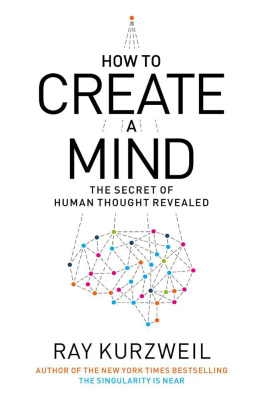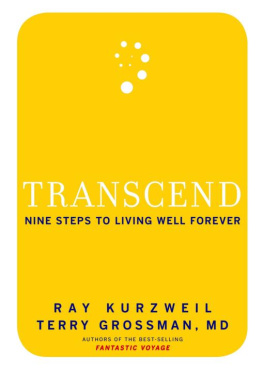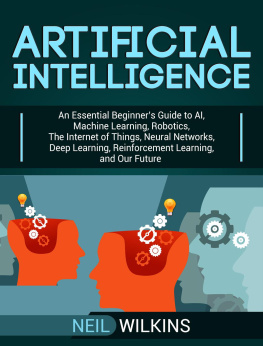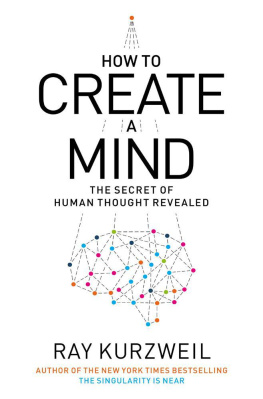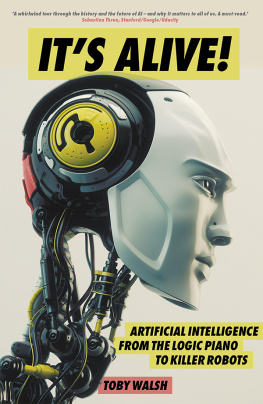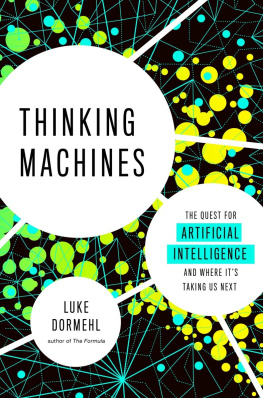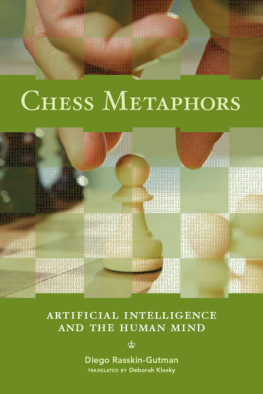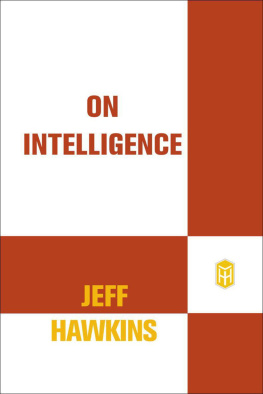Kurzweils book is a shining example of his prodigious ability to synthesize ideas from disparate domains and explain them to readers in simple, elegant language. Just like Chanutes Progress in Flying Machines ushered in the era of aviation over a century ago, this book is the harbinger of the coming revolution in artificial intelligence that will fulfil Kurzweils own prophecies about it
Dileep George, AI scientist, pioneer of hierarchical
models of the neocortex, Co-Founder of
Numenta and Vicarious Systems
[How to Create a Mind] describes the human brain as a machine that can understand hierarchical concepts ranging from the form of a chair to the nature of humour. His important insights emphasize the key role of learning both in the brain and AI
Raj Reddy, founding director, Robotics
Institute, Carnegie Mellon University
Ray Kurzweil pioneered artificial intelligence systems that could read print in any typestyle, synthesize speech and music, and understand speech. These were the forerunners to the present revolution in machine learning that is creating intelligent computers that can beat humans in chess, win on Jeopardy! and drive cars. [How to Create a Mind] is a clear and compelling overview of the progress, especially in learning, that is enabling this revolution in the technologies of intelligence
Tomaso Poggio, Eugene McDermott Professor in the
MIT Department of Brain and Cognitive Sciences
HOW TO CREATE A MIND
ALSO BY RAY KURZWEIL
Transcend: Nine Steps to Living Well Forever (with Terry Grossman)
The Singularity Is Near: When Humans Transcend Biology
Fantastic Voyage: Live Long Enough to Live Forever (with Terry Grossman)
The Age of Spiritual Machines:
When Computers Exceed Human Intelligence
The 10% Solution for a Healthy Life
The Age of Intelligent Machines
HOW TO
CREATE
A
MIND
THE SECRET OF HUMAN
THOUGH REVEALED
RAY KURZWEIL

DUCKWORTH OVERLOOK
This eBook edition 2013
First published in 2013 by
Duckworth Overlook
90-93 Cowcross Street, London EC1M 6BF
Tel: 020 7490 7300
Fax: 020 7490 0080
www.ducknet.co.uk
2012 by Ray Kurzweil
First published in 2012 by Viking Penguin,
a member of Penguin Group (USA) Inc.
Red by Amoo Oluseun. Used by permission of the author. The pictures pretty bleak, gentlemen ... from The Far Side by Gary Larson (November 7, 1985). Used by permission of Creators Syndicate.
Illustration credits
(two): Images by Marvin Minsky. Used by permission of Marvin Minsky. Some credits appear adjacent to the respective images. Other images designed by Ray Kurzweil, illustrated by Laksman Frank.
While the author has made every effort to provide accurate telephone numbers, Internet addresses and other contact information at the time of publication, neither the publisher nor the author assumes any responsibility for errors, or for changes that occur after publication. Furthermore, the publisher does not have any control over and does not assume any responsibility for author or third-party websites or their content.
All rights reserved. No part of this publication may be reproduced, stored in a retrieval system, or transmitted, in any form or by any means, electronic, mechanical, photocopying, recording or otherwise, without the prior permission of the publisher.
The right of Ray Kurzweil to be identified as the Author of the Work has been asserted by him in accordance with the Copyright, Designs and Patents Act 1988.
A catalogue record for this book is available
from the British Library
ISBNs
Hardback: 978 0 7156 4537 6
Mobipocket: : 978 0 7156 4594 9
Epub: 978 0 7156 4595 6
Library PDF: 978 0 7156 4596 3
To Leo Oscar Kurzweil. You are entering an extraordinary world.
ACKNOWLEDGMENTS
Id like to express my gratitude to my wife, Sonya, for her loving patience through the vicissitudes of the creative process;
To my children, Ethan and Amy; my daughter-in-law, Rebecca; my sister, Enid; and my new grandson, Leo, for their love and inspiration;
To my mother, Hannah, for supporting my early ideas and inventions, which gave me the freedom to experiment at a young age, and for keeping my father alive during his long illness;
To my longtime editor at Viking, Rick Kot, for his leadership, steady and insightful guidance, and expert editing;
To Loretta Barrett, my literary agent for twenty years, for her astute and enthusiastic guidance;
To Aaron Kleiner, my long-term business partner, for his devoted collaboration for the past forty years;
To Amara Angelica for her devoted and exceptional research support; To Sarah Black for her outstanding research insights and ideas;
To Laksman Frank for his excellent illustrations;
To Sarah Reed for her enthusiastic organizational support;
To Nanda Barker-Hook for her expert organization of my public events on this and other topics;
To Amy Kurzweil for her guidance on the craft of writing;
To Cindy Mason for her research support and ideas on AI and the mind-body connection;
To Dileep George for his discerning ideas and insightful discussions by e-mail and otherwise;
To Martine Rothblatt for her dedication to all of the technologies I discuss in the book and for our collaborations in developing technologies in these areas;
To the KurzweilAI.net team, who provided significant research and logistical support for this project, including Aaron Kleiner, Amara Angelica, Bob Beal, Casey Beal, Celia Black-Brooks, Cindy Mason, Denise Scutellaro, Joan Walsh, Giulio Prisco, Ken Linde, Laksman Frank, Maria Ellis, Nanda Barker-Hook, Sandi Dube, Sarah Black, Sarah Brangan, and Sarah Reed;
To the dedicated team at Viking Penguin for all of their thoughtful expertise, including Clare Ferraro (president), Carolyn Coleburn (director of publicity), Yen Cheong and Langan Kingsley (publicists), Nancy Sheppard (director of marketing), Bruce Giffords (production editor), Kyle Davis (editorial assistant), Fabiana Van Arsdell (production director), Roland Ottewell (copy editor), Daniel Lagin (designer), and Julia Thomas (jacket designer);
To my colleagues at Singularity University for their ideas, enthusiasm, and entrepreneurial energy;
To my colleagues who have provided inspired ideas reflected in this volume, including Barry Ptolemy, Ben Goertzel, David Dalrymple, Dileep George, Felicia Ptolemy, Francis Ganong, George Gilder, Larry Janowitch, Laura Deming, Lloyd Watts, Martine Rothblatt, Marvin Minsky, Mickey Singer, Peter Diamandis, Raj Reddy, Terry Grossman, Tomaso Poggio, and Vlad Sejnoha;
To my peer expert readers, including Ben Goertzel, David Gamez, Dean Kamen, Dileep George, Douglas Katz, Harry George, Lloyd Watts, Martine Rothblatt, Marvin Minsky, Paul Linsay, Rafael Reif, Raj Reddy, Randal Koene, Dr. Stephen Wolfram, and Tomaso Poggio;
To my in-house and lay readers whose names appear above;
And, finally, to all of the creative thinkers in the world who inspire me every day.
CONTENTS
HOW TO CREATE A MIND
INTRODUCTION
The Brainis wider than the Sky
Forput them side by side
The one the other will contain
With easeand Youbeside
The Brain is deeper than the sea
Forhold themBlue to Blue
The one the other will absorb
As SpongesBucketsdo



